Fiat Panda vs Hyundai Bayon – Which car suits you better?
Two cars, one duel: Fiat Panda meets Hyundai Bayon.
Which one wins in performance, efficiency and value for money? Find out now!
Costs and Efficiency:
When it comes to price and running costs, the biggest differences usually appear. This is often where you see which car fits your budget better in the long run.
Fiat Panda has a significantly advantage in terms of price – it starts at 14100 £, while the Hyundai Bayon costs 20100 £. That’s a price difference of around 5923 £.
Fuel consumption also shows a difference: Fiat Panda manages with 5 L and is therefore slight more efficient than the Hyundai Bayon with 5.40 L. The difference is about 0.40 L per 100 km.
Engine and Performance:
Power, torque and acceleration are the classic benchmarks for car enthusiasts – and here, some clear differences start to show.
When it comes to engine power, the Hyundai Bayon has a noticeable edge – offering 100 HP compared to 70 HP. That’s roughly 30 HP more horsepower.
In acceleration from 0 to 100 km/h, the Hyundai Bayon is noticeable quicker – completing the sprint in 11.30 s, while the Fiat Panda takes 13.90 s. That’s about 2.60 s faster.
In terms of top speed, the Hyundai Bayon performs hardly perceptible better – reaching 179 km/h, while the Fiat Panda tops out at 164 km/h. The difference is around 15 km/h.
There’s also a difference in torque: Hyundai Bayon pulls convincingly stronger with 200 Nm compared to 92 Nm. That’s about 108 Nm difference.
Space and Everyday Use:
Cabin size, boot volume and payload all play a role in everyday practicality. Here, comfort and flexibility make the difference.
Seats: Hyundai Bayon offers slightly more seating capacity – 5 vs 4.
In curb weight, Fiat Panda is slightly lighter – 1055 kg compared to 1170 kg. The difference is around 115 kg.
In terms of boot space, the Hyundai Bayon offers clearly more room – 411 L compared to 225 L. That’s a difference of about 186 L.
In maximum load capacity, the Hyundai Bayon performs evident better – up to 1205 L, which is about 335 L more than the Fiat Panda.
When it comes to payload, Hyundai Bayon clearly perceptible takes the win – 465 kg compared to 365 kg. That’s a difference of about 100 kg.
Who comes out on top?
Overall, the Hyundai Bayon shows itself to be leaves the rival little chance and secures the title of DriveDuel Champion.
It convinces with the more balanced overall package and proves to be the more versatile choice for everyday use.
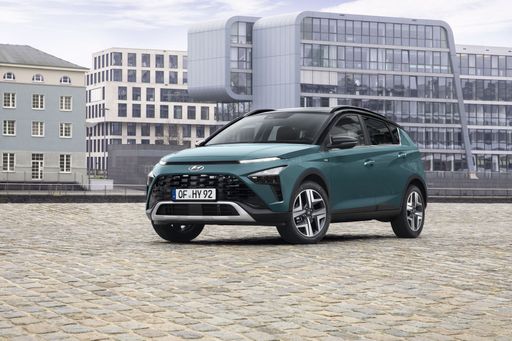
Hyundai Bayon
Fiat Panda
The Fiat Panda is a compact city car that brilliantly combines practical design and efficient functionality. Its boxy shape provides ample interior space and visibility, making it a favourite among urban drivers. With its reputation for reliability and affordability, the Panda continues to be a top choice for those seeking a no-frills, dependable vehicle.
details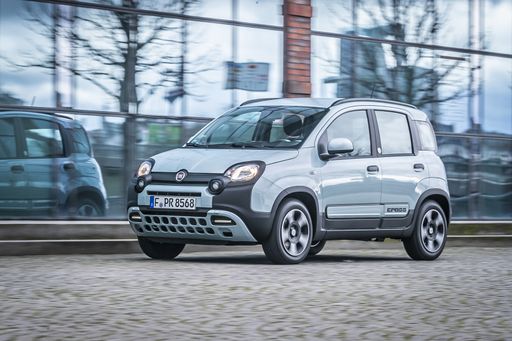 @ media.stellantis.com
@ media.stellantis.com
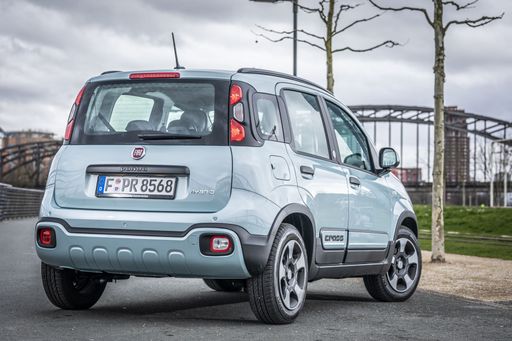 @ media.stellantis.com
@ media.stellantis.com
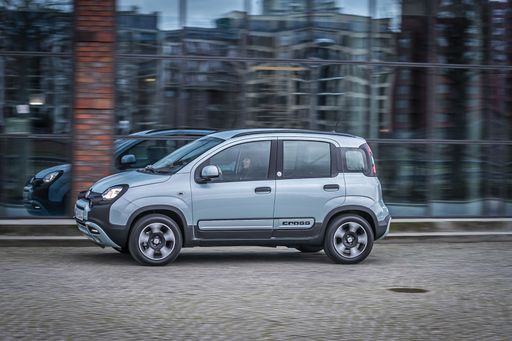 @ media.stellantis.com
@ media.stellantis.com
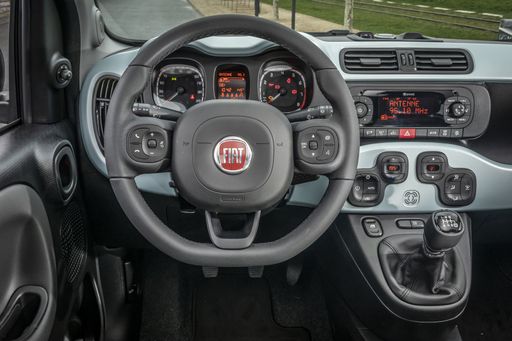 @ media.stellantis.com
@ media.stellantis.com
Hyundai Bayon
The Hyundai Bayon is a compact crossover that effortlessly merges practicality with modern design. Its sleek exterior and spacious interior make it an ideal choice for urban settings and longer journeys alike. With a focus on comfort and connectivity, this vehicle provides a smooth driving experience paired with advanced technology features.
details @ hyundai.news
@ hyundai.news
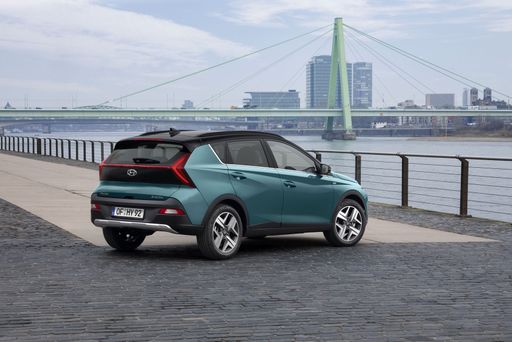 @ hyundai.news
@ hyundai.news
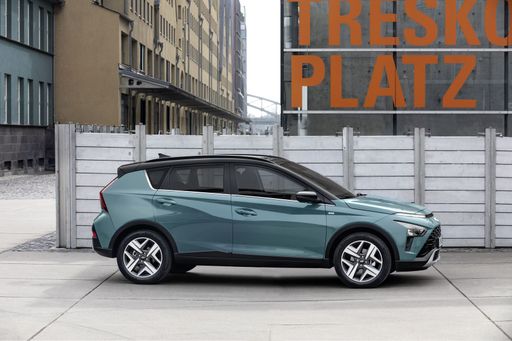 @ hyundai.news
@ hyundai.news
 @ hyundai.news
@ hyundai.news
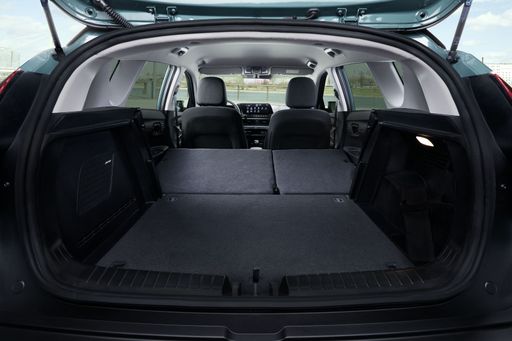 @ hyundai.news
@ hyundai.news

|

|
|
|
|
Costs and Consumption |
|
|---|---|
|
Price
14100 £
|
Price
20100 - 25800 £
|
|
Consumption L/100km
5 L
|
Consumption L/100km
5.4 - 5.5 L
|
|
Consumption kWh/100km
-
|
Consumption kWh/100km
-
|
|
Electric Range
-
|
Electric Range
-
|
|
Battery Capacity
-
|
Battery Capacity
-
|
|
co2
113 g/km
|
co2
124 g/km
|
|
Fuel tank capacity
38 L
|
Fuel tank capacity
40 L
|
Dimensions and Body |
|
|---|---|
|
Body Type
Hatchback
|
Body Type
SUV
|
|
Seats
4
|
Seats
5
|
|
Doors
5
|
Doors
5
|
|
Curb weight
1055 kg
|
Curb weight
1170 - 1195 kg
|
|
Trunk capacity
225 L
|
Trunk capacity
411 L
|
|
Length
3635 mm
|
Length
4180 mm
|
|
Width
1643 mm
|
Width
1775 mm
|
|
Height
1551 mm
|
Height
1500 mm
|
|
Max trunk capacity
870 L
|
Max trunk capacity
1205 L
|
|
Payload
365 kg
|
Payload
460 - 465 kg
|
Engine and Performance |
|
|---|---|
|
Engine Type
Petrol MHEV
|
Engine Type
Petrol
|
|
Transmission
Manuel
|
Transmission
Manuel, Automatic
|
|
Transmission Detail
Manual Gearbox
|
Transmission Detail
Manual Gearbox, Dual-Clutch Automatic
|
|
Drive Type
Front-Wheel Drive
|
Drive Type
Front-Wheel Drive
|
|
Power HP
70 HP
|
Power HP
100 HP
|
|
Acceleration 0-100km/h
13.90 s
|
Acceleration 0-100km/h
11.3 - 12.4 s
|
|
Max Speed
164 km/h
|
Max Speed
176 - 179 km/h
|
|
Torque
92 Nm
|
Torque
172 - 200 Nm
|
|
Number of Cylinders
3
|
Number of Cylinders
3
|
|
Power kW
51 kW
|
Power kW
74 kW
|
|
Engine capacity
999 cm3
|
Engine capacity
998 cm3
|
General |
|
|---|---|
|
Model Year
2024
|
Model Year
2024
|
|
CO2 Efficiency Class
C
|
CO2 Efficiency Class
D
|
|
Brand
Fiat
|
Brand
Hyundai
|
Is the Fiat Panda offered with different drivetrains?
Available configurations include Front-Wheel Drive.
The prices and data displayed are estimates based on German list prices and may vary by country. This information is not legally binding.
